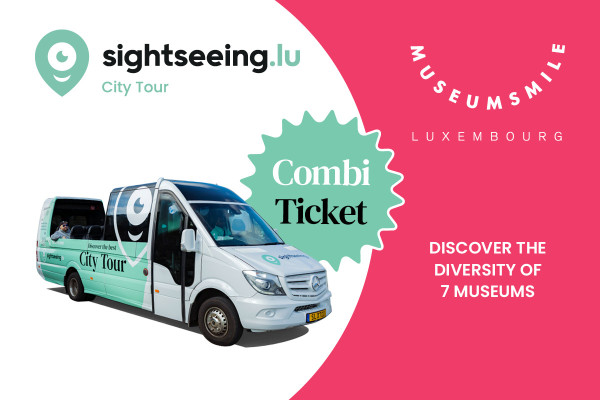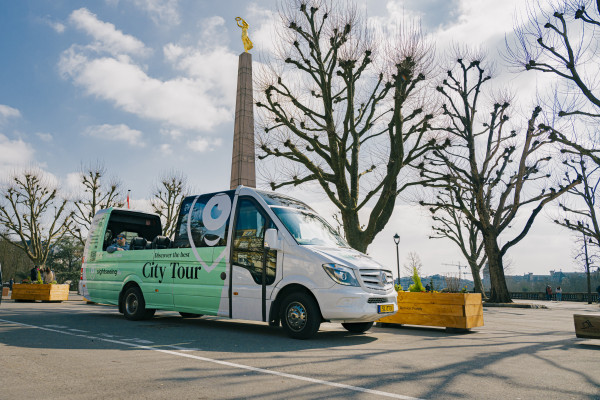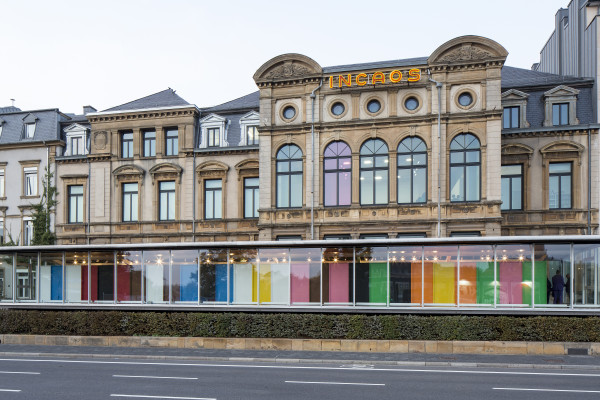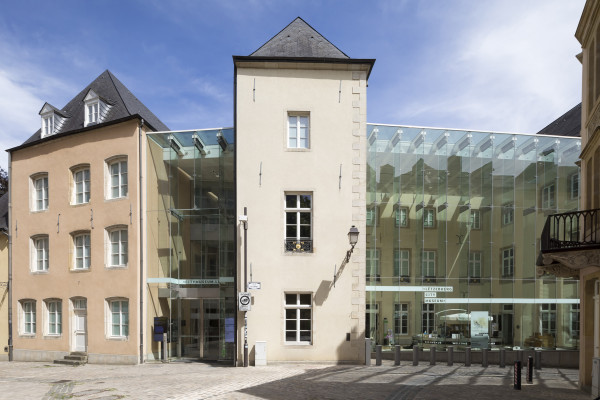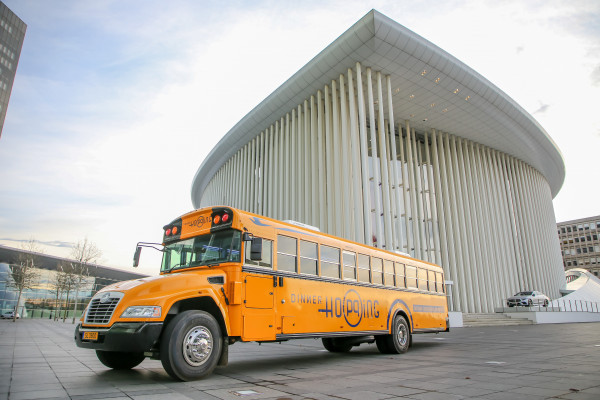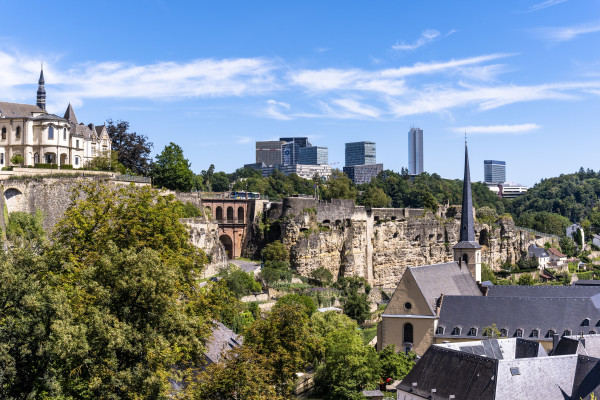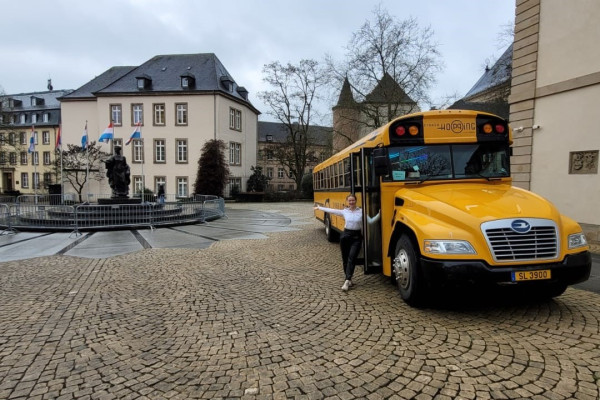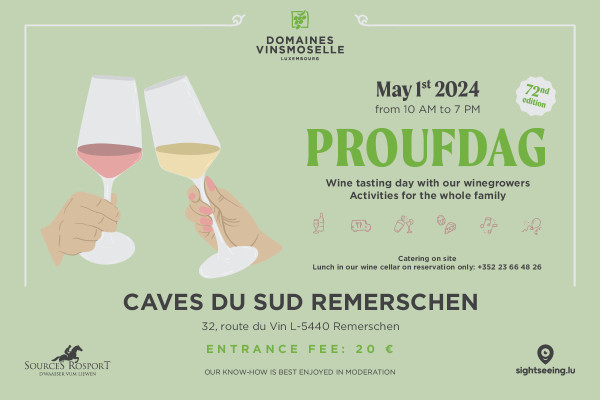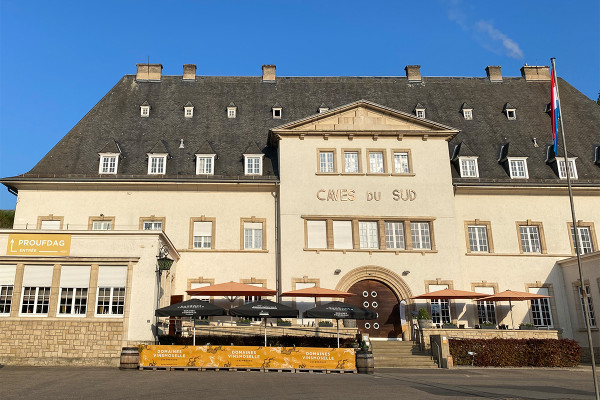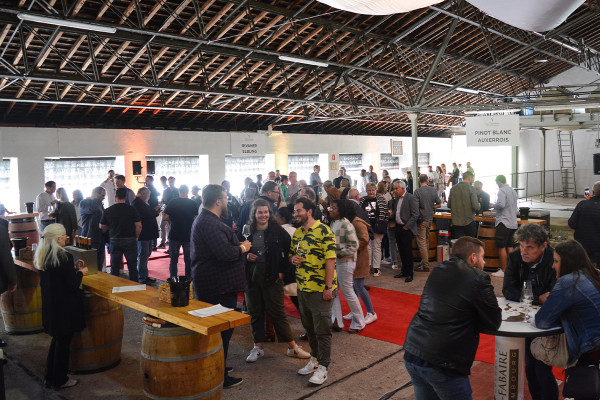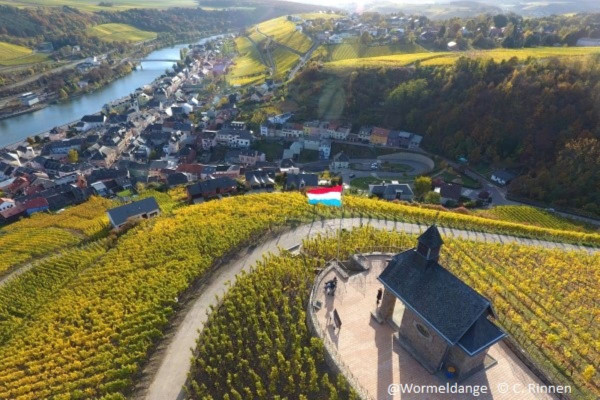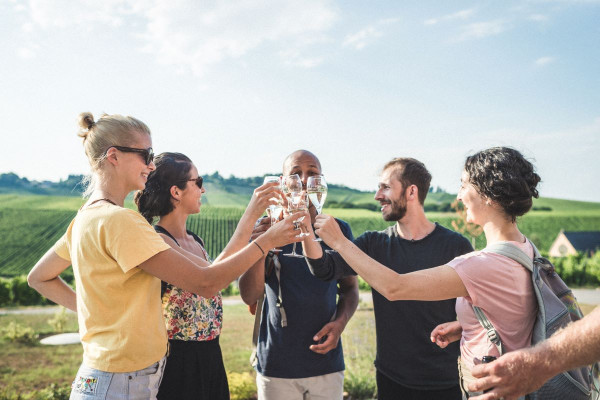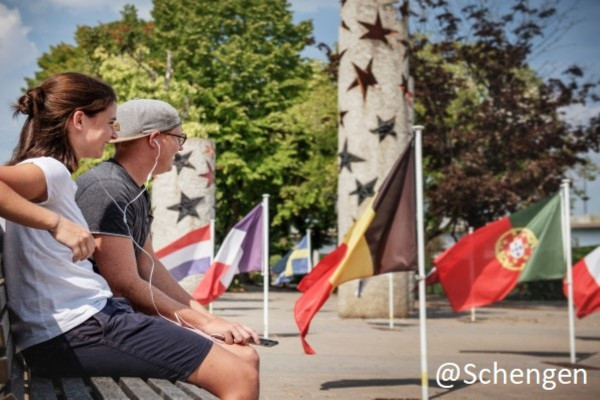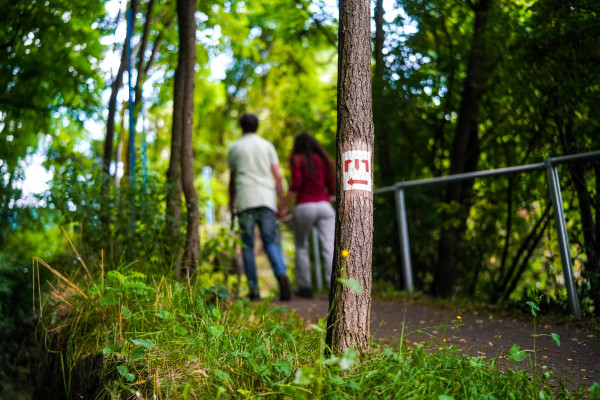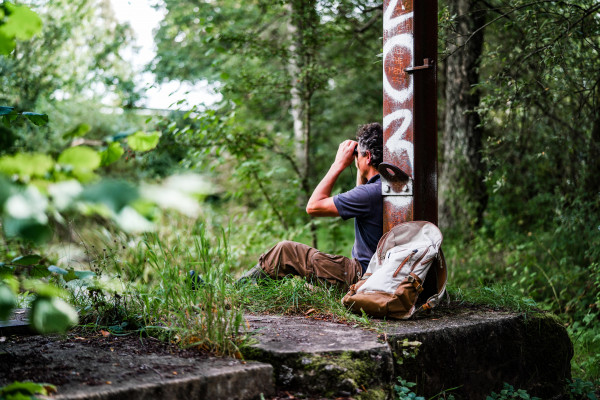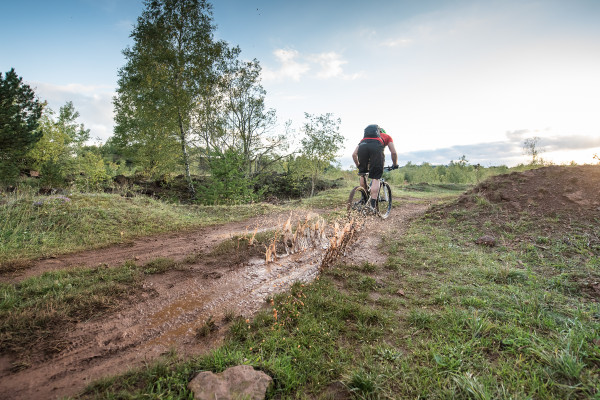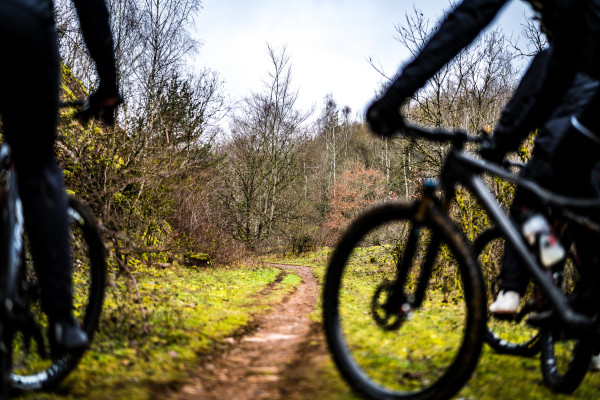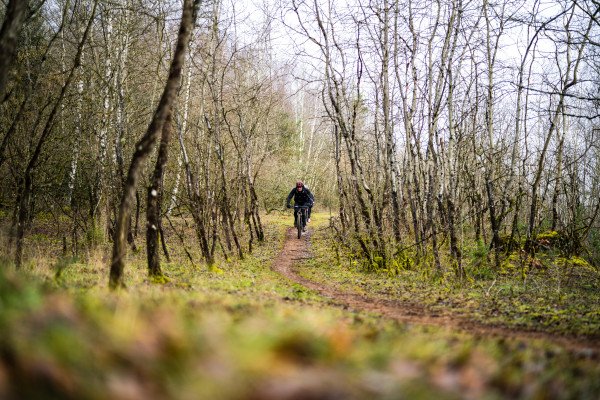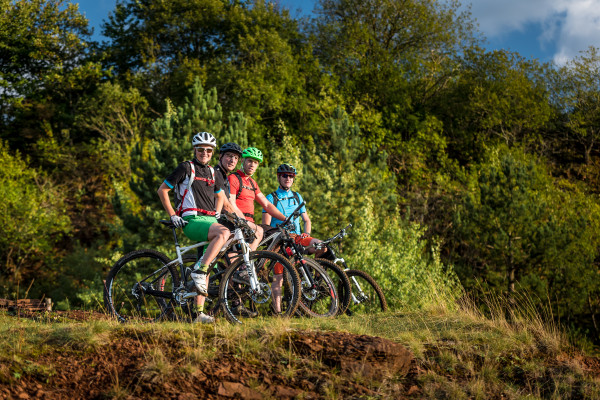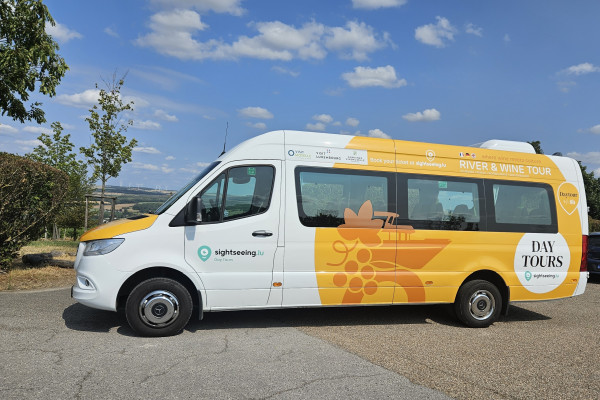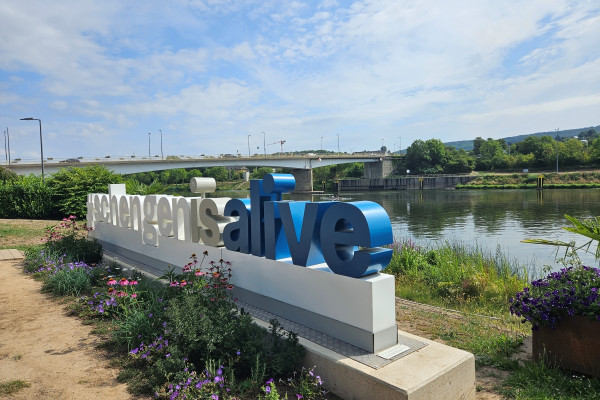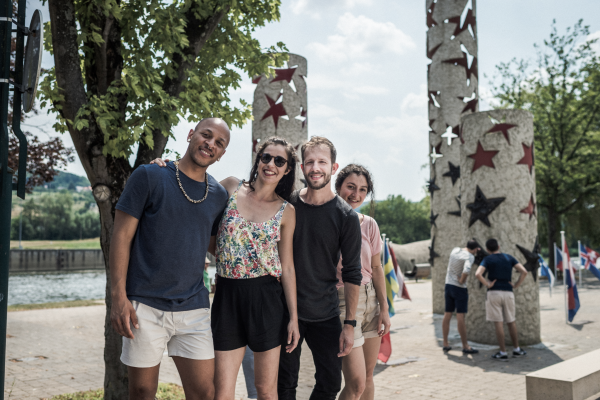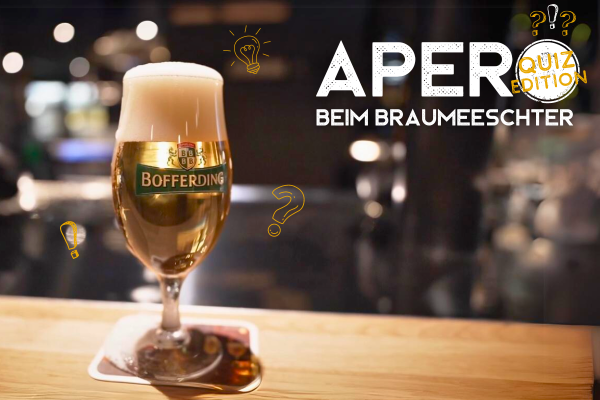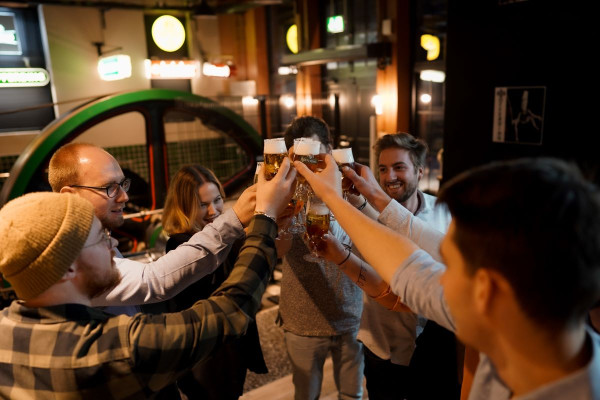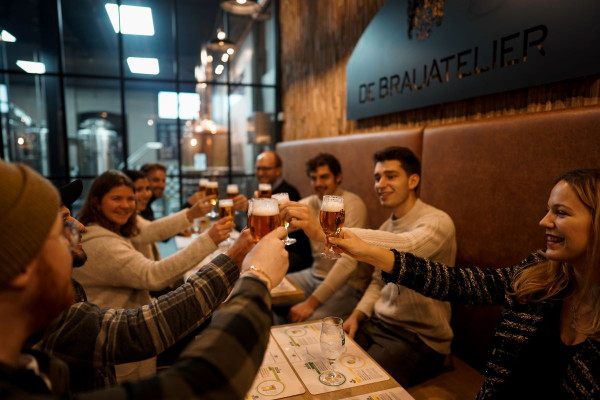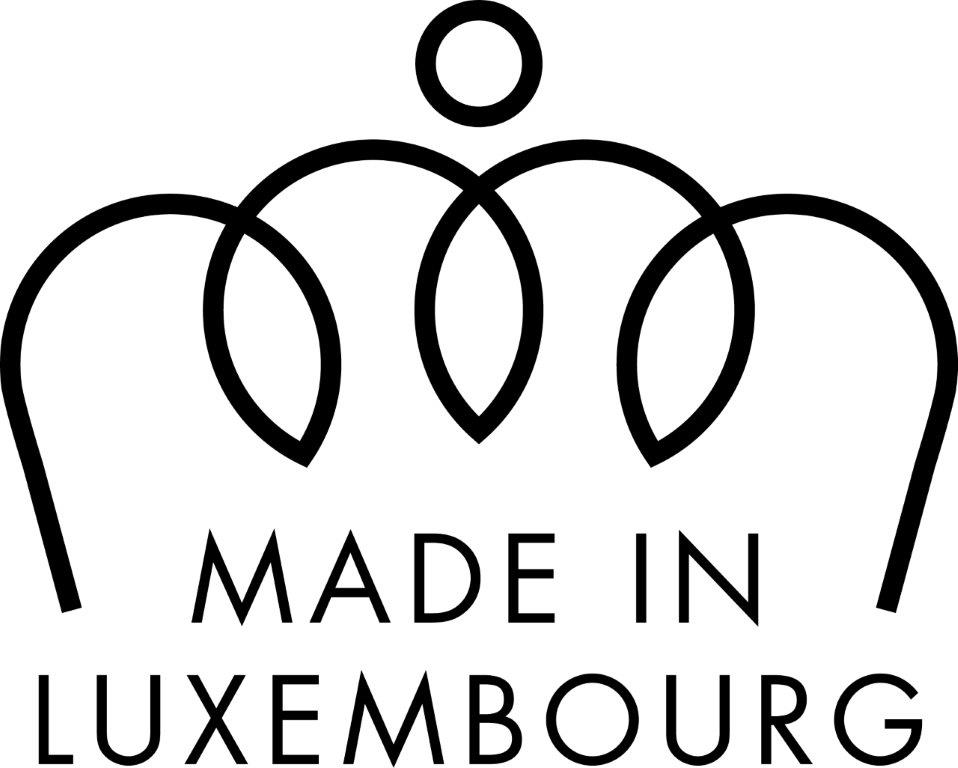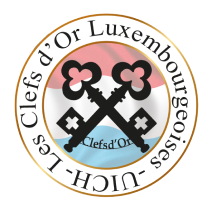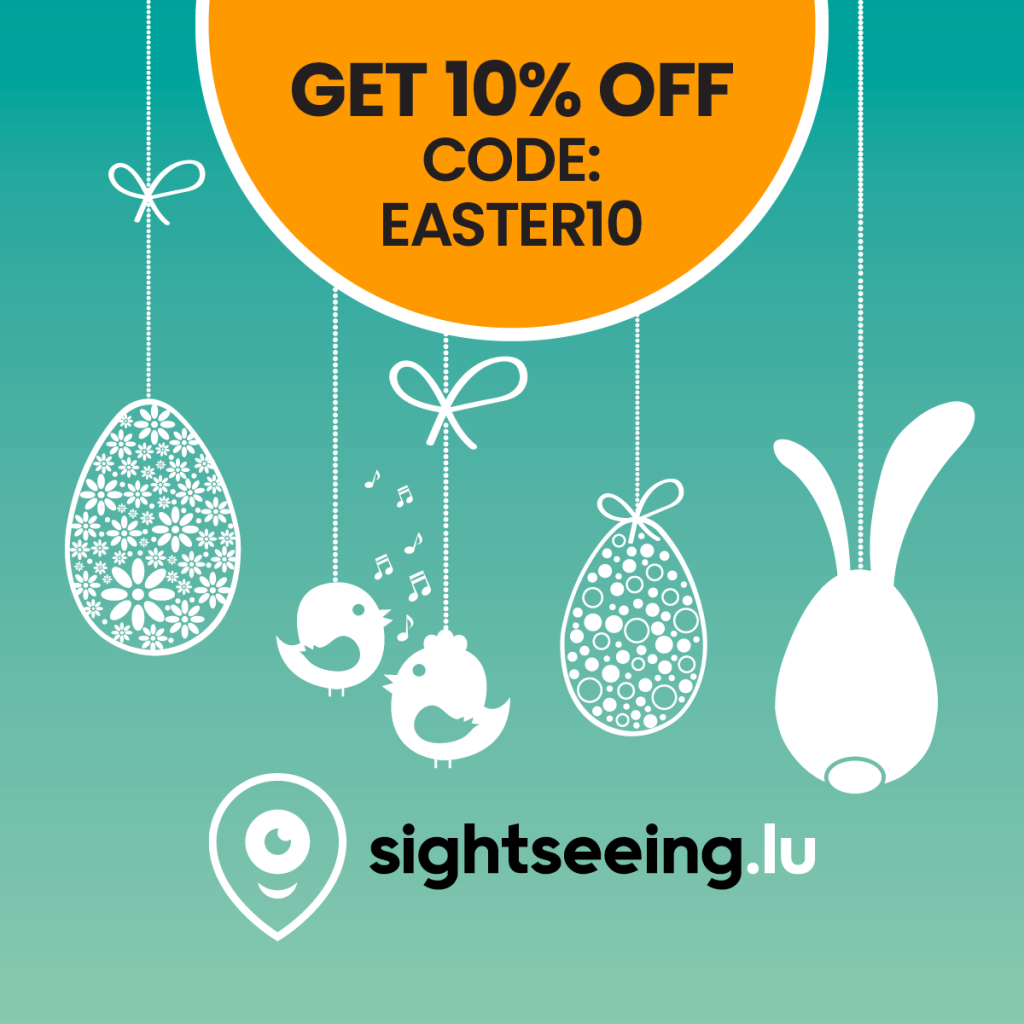Sightseeing offer
from €18
Meet Point
BUS STOP, Mnt de Clausen, 1343 Pafendall Luxembourg
About meet point:
Available Parking: Parking Hamilius; Parking Knuedler
Nearest Train Station:Bus: Um Bock ; Tram: Hamilius
Trip details
Duration
48 hours
Languages
-
English
-
Spanish
-
French
-
Dutch
-
Russian
-
German
Location
BUS STOP
Highlights
-
Admire the most beautiful landmarks in the capital city
-
Admission to 7 museums of Luxembourg City
-
Tour of the Upper Town and Kirchberg district
Description
Make the most of this exceptional combi offer and enjoy a ride on the Luxembourg City Line double-decker bus and additionally discover the diversity of the 7 museums of Luxembourg City with your exclusive museum pass.
- 48-hour ticket
- Audio Guide in 7 languages
- Free headphones
- Entry pass for the 7 museums of the capital city
This exclusive combi-ticket enables you to enjoy a sightseeing tour on the City Line and to visit the 7 museums in the city. Since the ticket is valid for 48 hours, you can split your museum visits over two days as you wish. However, it must be two consecutive days in the same week in which the ticket was purchased.
The audio guide is available in 7 languages: Luxembourgish, German, English, French, Dutch, Spanish, Russian.
Here are the 7 museums of the association “d’Stater Muséeën”
1. Villa Vauban – Musée d’art de la Ville de Luxembourg (closed on Tuesdays)
The 19th-century bourgeois villa with its contemporary extension is located in the heart of the city, in the middle of a historic park inviting you to relax. The exhibitions organized at Villa Vauban draw on collections consisting mainly of 17th-century Dutch works and 19th-century French history and landscape paintings. The museum favors variable exhibition formats, allowing the works to be explored from different angles. Temporary exhibitions include loans from major international collections. A varied program of activities awaits the visitor.
2. Casino Luxembourg – Forum d’art Contemporain (closed on Tuesdays)
Casino Luxembourg – Forum d’art contemporain, the flagship contemporary art institution in Luxembourg, is dedicated exclusively to contemporary creation. The art centre holds exhibitions with an international programme of mainly younger-generation artists. The venue also houses a library and reading room (InfoLab), a bookshop, and a BlackBox projection space devoted to artists’ videos. In addition to the exhibitions, a vast programme of lectures, master classes and other encounters ensures direct contact between the artists and the public, which is essential for the comprehension of today’s art.
3. Lëtzebuerg City Museum (closed on Mondays)
The museum, located in the heart of the old town, is housed in a restored complex of historic houses. On three levels, partly carved in the rock, visitors discover the history of the city through original objects and topographical reconstructions as well as a mobile application. Temporary exhibitions are regularly held on the two upper levels.
4. MNHA – Musée national d’histoire et d’art (closed on Mondays)
In its central building, inaugurated in 2002 and three ancient town houses renovated in 2015, the National Museum of History and Art offers more than 6.000 m2 of exhibition space presenting its encyclopedic collections.
5. MNHN – Musée national d’histoire naturelle ‘Natur Musée’ (closed on Mondays)
By reflecting the state of current research in natural history in general and the museum’s collections in particular, permanent exhibitions provide a global perspective on current topics such as evolution and biodiversity. The new arrangement enables to better display the variety of collections and encourages a new look at nature, its history and study. The mission of the “natur musée” is to raise environmental awareness and contribute to the conservation of the natural heritage. The exhibitions serve as a direct interface between the public and the actors of scientific production in the museum, while the division of subjects now only follows scientific disciplines very freely. The collections of the National Museum of Natural History reflect more than 160 years of the Institute’s history and above all the dynamism and commitment of its curators and their collaborators. Collection development can be reconstructed by comparing the various inventories established over 160 years ago with the current content of the collections. The following attributes characterize the current collection: regional, scientific, heritage, educational, aesthetic and historical.
6. Musée Dräi Eechelen (closed on Mondays)
An exceptional historic landmark, the restored remains of Fort Thungen, built in 1732-33, has been hosting the Museum Drai Eechelen -Fortress, History, Identities since 2012. The tour through the casemates documents the history of the fortress and its importance for the territorial development of the country and its identity. The architectural complex of the historic building itself features as the main exhibit, compromising a spectacular network of underground tunnels which remain in a state similar to its last modification in 1836/37.
7. Mudam Luxembourg – Musée d’art moderne Grand-Duc Jean (closed on Tuesdays)
Mudam Luxembourg – Musée d’Art Moderne Grand-Duc Jean opened in 2006 in a purpose-built building designed by the renowned Sino-American architect Ieoh Ming Pei and located in the Park Draï Eechelen, overlooking the historic city of Luxembourg. Through its collection, exhibitions, programs and partnerships, Mudam Luxembourg aims to advance its mission to present the most relevant art of our times.
- No access to temporary exhibitions in the museums (to pay separately)
– Requirements: none
– Please bring:
- Ticket (printed or digital)
– Important info:
- Ticket validity: 48 hours
- Contact: +352 266 51 – 2200
- Before purchasing your ticket, please check the opening days / times of the museums in the description.
- Please take into account that some museums are not free of charge. But some are, and they are still included in the ticket.
Trip details
Duration
48 hours
Languages
-
English
-
Spanish
-
French
-
Dutch
-
Russian
-
German
Location
BUS STOP
Highlights
-
Admire the most beautiful landmarks in the capital city
-
Admission to 7 museums of Luxembourg City
-
Tour of the Upper Town and Kirchberg district
-
Bewundern Sie die schönsten Wahrzeichen der Hauptstadt
-
Eintritt in 7 Museen der Stadt Luxemburg
-
Rundgang durch die Oberstadt und Stadtteil Kirchberg
-
Admire les plus beaux sites de la capitale
-
Entrée dans 7 musées de la ville de Luxembourg
-
Visite de la Ville Haute et du quartier Kirchberg
Description
Profite de cette offre combinée exceptionnelle et fait un tour dans le bus à impériale- le City Line et en plus, découvre la diversité des 7 musées de la capitale luxembourgeoise avec ton “pass musées” exclusif.
Make the most of this exceptional combi offer and enjoy a ride on the Luxembourg City Line double-decker bus and additionally discover the diversity of the 7 museums of Luxembourg City with your exclusive museum pass.
Make the most of this exceptional combi offer and enjoy a ride on the Luxembourg City Line double-decker bus and additionally discover the diversity of the 7 museums of Luxembourg City with your exclusive museum pass.
- 48-hour ticket
- Audio Guide in 7 languages
- Free headphones
- Entry pass for the 7 museums of the capital city
- Valable 48 heures
- Guide audio en 7 langues (luxembourgeois, français, allemand, anglais, néerlandais)
- Ecouteurs gratuits
- Entrée dans les 7 musées de la capitale
- 48-Stunden Ticket
- Audioguide in 7 Sprachen (Luxemburgisch, Französisch, Deutsch, Englisch, Niederländisch)
- Kopfhörer
- Eintritt in 7 Museen
This exclusive combi-ticket enables you to enjoy a sightseeing tour on the City Line and to visit the 7 museums in the city. Since the ticket is valid for 48 hours, you can split your museum visits over two days as you wish. However, it must be two consecutive days in the same week in which the ticket was purchased.
The audio guide is available in 7 languages: Luxembourgish, German, English, French, Dutch, Spanish, Russian.
Here are the 7 museums of the association “d’Stater Muséeën”
1. Villa Vauban – Musée d’art de la Ville de Luxembourg (closed on Tuesdays)
The 19th-century bourgeois villa with its contemporary extension is located in the heart of the city, in the middle of a historic park inviting you to relax. The exhibitions organized at Villa Vauban draw on collections consisting mainly of 17th-century Dutch works and 19th-century French history and landscape paintings. The museum favors variable exhibition formats, allowing the works to be explored from different angles. Temporary exhibitions include loans from major international collections. A varied program of activities awaits the visitor.
2. Casino Luxembourg – Forum d’art Contemporain (closed on Tuesdays)
Casino Luxembourg – Forum d’art contemporain, the flagship contemporary art institution in Luxembourg, is dedicated exclusively to contemporary creation. The art centre holds exhibitions with an international programme of mainly younger-generation artists. The venue also houses a library and reading room (InfoLab), a bookshop, and a BlackBox projection space devoted to artists’ videos. In addition to the exhibitions, a vast programme of lectures, master classes and other encounters ensures direct contact between the artists and the public, which is essential for the comprehension of today’s art.
3. Lëtzebuerg City Museum (closed on Mondays)
The museum, located in the heart of the old town, is housed in a restored complex of historic houses. On three levels, partly carved in the rock, visitors discover the history of the city through original objects and topographical reconstructions as well as a mobile application. Temporary exhibitions are regularly held on the two upper levels.
4. MNHA – Musée national d’histoire et d’art (closed on Mondays)
In its central building, inaugurated in 2002 and three ancient town houses renovated in 2015, the National Museum of History and Art offers more than 6.000 m2 of exhibition space presenting its encyclopedic collections.
5. MNHN – Musée national d’histoire naturelle ‘Natur Musée’ (closed on Mondays)
By reflecting the state of current research in natural history in general and the museum’s collections in particular, permanent exhibitions provide a global perspective on current topics such as evolution and biodiversity. The new arrangement enables to better display the variety of collections and encourages a new look at nature, its history and study. The mission of the “natur musée” is to raise environmental awareness and contribute to the conservation of the natural heritage. The exhibitions serve as a direct interface between the public and the actors of scientific production in the museum, while the division of subjects now only follows scientific disciplines very freely. The collections of the National Museum of Natural History reflect more than 160 years of the Institute’s history and above all the dynamism and commitment of its curators and their collaborators. Collection development can be reconstructed by comparing the various inventories established over 160 years ago with the current content of the collections. The following attributes characterize the current collection: regional, scientific, heritage, educational, aesthetic and historical.
6. Musée Dräi Eechelen (closed on Mondays)
An exceptional historic landmark, the restored remains of Fort Thungen, built in 1732-33, has been hosting the Museum Drai Eechelen -Fortress, History, Identities since 2012. The tour through the casemates documents the history of the fortress and its importance for the territorial development of the country and its identity. The architectural complex of the historic building itself features as the main exhibit, compromising a spectacular network of underground tunnels which remain in a state similar to its last modification in 1836/37.
7. Mudam Luxembourg – Musée d’art moderne Grand-Duc Jean (closed on Tuesdays)
Mudam Luxembourg – Musée d’Art Moderne Grand-Duc Jean opened in 2006 in a purpose-built building designed by the renowned Sino-American architect Ieoh Ming Pei and located in the Park Draï Eechelen, overlooking the historic city of Luxembourg. Through its collection, exhibitions, programs and partnerships, Mudam Luxembourg aims to advance its mission to present the most relevant art of our times.
Ce ticket combi te permet de faire un voyage touristique avec le bus touristique City Line et de visiter à ta guise les 7 musées de la ville de Luxembourg. Comme ton billet est valable pendant 48 heures, tu peux répartir tes visites des musées sur les deux jours comme tu le souhaites.Toutefois, il faut que ce soit deux jours consécutifs dans la même semaine où le billet a été acheté.
Les sept musées du groupement « d’Stater Muséeën »
1. Villa Vauban – Musée d’art de la Ville de Luxembourg (fermé les mardis)
La villa bourgeoise du XIXe siècle avec son extension contemporaine est située au cœur de la ville, au milieu d’un parc historique invitant à la détente. Les expositions organisées à la Villa Vauban puisent dans des collections qui sont constituées en grande partie d’œuvres néerlandaises du XVIIe siècle et de peintures d’histoire et de paysage françaises du XIXe siècle. Le musée privilégie des formats d’exposition variables, permettant d’explorer les œuvres sous différents aspects. Les expositions temporaires d’envergure intègrent des prêts en provenance des grandes collections internationales. Un programme d’activités variées attend le visiteur.
2. Casino Luxembourg – Forum d’art Contemporain (fermé les mardis)
Institution-phare de l’art contemporain au Luxembourg, le Casino Luxembourg – Forum d’art contemporain se consacre exclusivement à la création contemporaine. Le centre d’art présente des expositions au travers d’une programmation internationale et en prenant principalement appui sur une jeune génération d’artistes. Le lieu abrite, à côté d’une bibliothèque et sa salle de lecture, une librairie et un espace de projection BlackBox consacré à des vidéos d’artistes. Un programme comprenant conférences, master classes, rencontres avec les artistes et ateliers complète le cycle des expositions.
3. Lëtzebuerg City Museum (fermé les lundis)
Le musée, situé au cœur de la vieille ville, est installé dans un ensemble restauré de maisons historiques. Sur trois niveaux, en partie creusés dans la roche, le visiteur découvre l’histoire de la ville à travers des objets originaux ainsi que des reconstitutions topographiques animées par un dispositif multimédia. Des expositions temporaires ont lieu régulièrement sur les trois niveaux supérieurs.
4. MNHA – Musée national d’histoire et d’art (fermé les lundis)
Dans son bâtiment central moderne, inaugure en 2002, ainsi que dans trois maisons anciennes entièrement rénovées en 2015, le Musée national d’histoire et d’art, situe en plein cœur de la capitale au Marche aux- Poissons, présente sur une surface de plus de 6.000 m2 des collections encyclopédiques.
5. MNHN – Musée national d’histoire naturelle ‘Natur Musée’ (fermé les lundis)
En reflétant l’état de la recherche actuelle en histoire naturelle en général et celle sur les collections du musée en particulier, les expositions permanentes développent une perspective globale sur des sujets d’actualités comme l’évolution et la biodiversité. Le ‘natur musée’ a pour mission, entre autres, de promouvoir la sensibilisation à l’environnement et de contribuer à la conservation du patrimoine naturel. Les expositions furent donc conçues comme une interface directe entre le public et les acteurs de la production scientifique au musée alors que le découpage des sujets ne suit plus. Les collections du Musée national d’histoire naturelle sont le reflet de plus de 160 années d’histoire de notre institut et avant tout le fruit du dynamisme et de l’engagement de ses conservateurs et de leurs collaborateurs. La collection actuelle peut être caractérisée par les attributs suivants : régionale, scientifique, patrimoniale, éducative, esthétique et historique.
6. Musée Dräi Eechelen – forteresse, histoire, identités (fermé les lundis)
Bâtiment historique d’exception, le réduit restauré du fort Thüngen, construit en 1732-33, abrite depuis 2012 le Musée Dräi Eechelen – Forteresse, Histoire, Identités. Grâce à un parcours original, le musée raconte l’histoire de la forteresse de Luxembourg et son importance dans la formation territoriale du pays et son identité. Le complexe architectural du réduit historique constitue en soi le principal objet d’exposition. Avec son spectaculaire système de galeries souterraines et de mines, il est conservé en grande partie dans l’état de sa dernière phase de construction, en 1836/37.
7. Mudam Luxembourg – Musée d’art moderne Grand-Duc Jean (fermé les mardis)
Inauguré en 2006, dans un bâtiment spécialement conçu par le célèbre architecte sino-américain Ming Pei, Mudam Luxembourg – Musée d’Art Moderne Grand-Duc Jean se situe dans le Park Dräi Eechelen, dominant le splendide centre historique de la Ville de Luxembourg. À travers sa collection, ses expositions, sa programmation et ses partenariats, Mudam Luxembourg a pour mission de promouvoir l’art emblématique de notre époque.
This exclusive combi-ticket enables you to enjoy a sightseeing tour on the City Line and to visit the 7 museums in the city. Since the ticket is valid for 48 hours, you can split your museum visits over two days as you wish. However, it must be two consecutive days in the same week in which the ticket was purchased.
The audio guide is available in 7 languages: Luxembourgish, German, English, French, Dutch, Spanish, Russian.
Here are the 7 museums of the association “d’Stater Muséeën”
1. Villa Vauban – Musée d’art de la Ville de Luxembourg (closed on Tuesdays)
The 19th-century bourgeois villa with its contemporary extension is located in the heart of the city, in the middle of a historic park inviting you to relax. The exhibitions organized at Villa Vauban draw on collections consisting mainly of 17th-century Dutch works and 19th-century French history and landscape paintings. The museum favors variable exhibition formats, allowing the works to be explored from different angles. Temporary exhibitions include loans from major international collections. A varied program of activities awaits the visitor.
2. Casino Luxembourg – Forum d’art Contemporain (closed on Tuesdays)
Casino Luxembourg – Forum d’art contemporain, the flagship contemporary art institution in Luxembourg, is dedicated exclusively to contemporary creation. The art centre holds exhibitions with an international programme of mainly younger-generation artists. The venue also houses a library and reading room (InfoLab), a bookshop, and a BlackBox projection space devoted to artists’ videos. In addition to the exhibitions, a vast programme of lectures, master classes and other encounters ensures direct contact between the artists and the public, which is essential for the comprehension of today’s art.
3. Lëtzebuerg City Museum (closed on Mondays)
The museum, located in the heart of the old town, is housed in a restored complex of historic houses. On three levels, partly carved in the rock, visitors discover the history of the city through original objects and topographical reconstructions as well as a mobile application. Temporary exhibitions are regularly held on the two upper levels.
4. MNHA – Musée national d’histoire et d’art (closed on Mondays)
In its central building, inaugurated in 2002 and three ancient town houses renovated in 2015, the National Museum of History and Art offers more than 6.000 m2 of exhibition space presenting its encyclopedic collections.
5. MNHN – Musée national d’histoire naturelle ‘Natur Musée’ (closed on Mondays)
By reflecting the state of current research in natural history in general and the museum’s collections in particular, permanent exhibitions provide a global perspective on current topics such as evolution and biodiversity. The new arrangement enables to better display the variety of collections and encourages a new look at nature, its history and study. The mission of the “natur musée” is to raise environmental awareness and contribute to the conservation of the natural heritage. The exhibitions serve as a direct interface between the public and the actors of scientific production in the museum, while the division of subjects now only follows scientific disciplines very freely. The collections of the National Museum of Natural History reflect more than 160 years of the Institute’s history and above all the dynamism and commitment of its curators and their collaborators. Collection development can be reconstructed by comparing the various inventories established over 160 years ago with the current content of the collections. The following attributes characterize the current collection: regional, scientific, heritage, educational, aesthetic and historical.
6. Musée Dräi Eechelen (closed on Mondays)
An exceptional historic landmark, the restored remains of Fort Thungen, built in 1732-33, has been hosting the Museum Drai Eechelen -Fortress, History, Identities since 2012. The tour through the casemates documents the history of the fortress and its importance for the territorial development of the country and its identity. The architectural complex of the historic building itself features as the main exhibit, compromising a spectacular network of underground tunnels which remain in a state similar to its last modification in 1836/37.
7. Mudam Luxembourg – Musée d’art moderne Grand-Duc Jean (closed on Tuesdays)
Mudam Luxembourg – Musée d’Art Moderne Grand-Duc Jean opened in 2006 in a purpose-built building designed by the renowned Sino-American architect Ieoh Ming Pei and located in the Park Draï Eechelen, overlooking the historic city of Luxembourg. Through its collection, exhibitions, programs and partnerships, Mudam Luxembourg aims to advance its mission to present the most relevant art of our times.
- No access to temporary exhibitions in the museums (to pay separately)
no translation available.
no translation available.
– Requirements: none
– Please bring:
- Ticket (printed or digital)
– Important info:
- Ticket validity: 48 hours
- Contact: +352 266 51 – 2200
- Before purchasing your ticket, please check the opening days / times of the museums in the description.
- Please take into account that some museums are not free of charge. But some are, and they are still included in the ticket.
– Exigences: none
– Veuillez apporter :
- Le ticket acheté doit être présenté sous forme de billet imprimé ou numérique.
– Informations importantes:
- Veuillez noter que l’itinéraire peut changer en raison des nombreux chantiers de construction dans la ville.
- Toutes les informations sont à trouver sur notre site www.sightseeing.lu
- Valable 48 heures
- Contact : +352 266 51 – 2200
– Voraussetzungen: none
– Bitte mitbringen:
- Das gekaufte Ticket muss als Print oder digitales Ticket vorgezeigt werden.
– Wichtige Informationen:
- Bitte beachten Sie dass das Routing wegen den vielen Baustellen in der Stadt ändern kann.
- Auf unserer Internetseite finden Sie immer alle wichtigen Informationen.
- Gültigkeit des Tickets: 48 Stunden
- Kontakt: +352 266 51 – 2200
- Die Öffnungszeiten der 7 Museen finden Sie hier: http://museumsmile.lu/index.php/fr/7-musem
Buy Tickets
Near this trip
There are no listings matching your search.
Reset